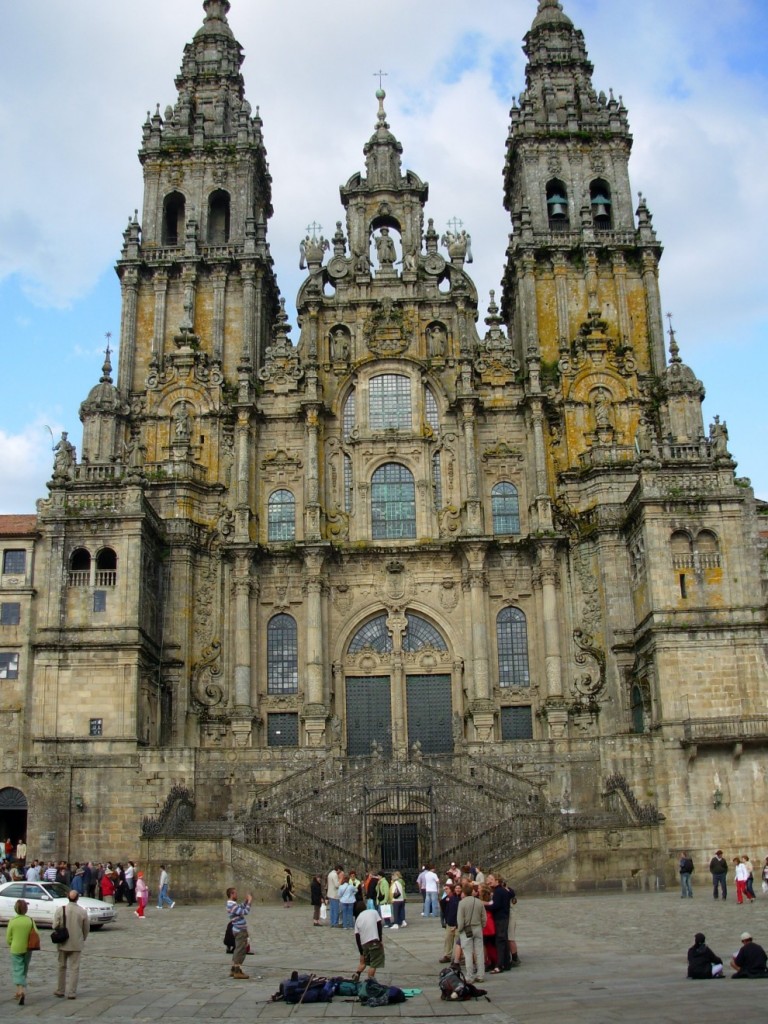“Doesn’t this guy ever stop to smell the flowers? This isn’t a race,” said the blond hiker about Martin Sheen in the movie, “The Way”.
She speaks of one of the lessons I learned while walking on the Camino de Santiago, (The Way of St. James), an ancient path that crosses northern Spain, beginning in St. Jean Pied de Port, France and ending 798 kilometers later at the cathedral in Santiago de Compostela, Spain.
Reflecting the popularity of this journey, feature movie, “The Way” has been recently released, taking viewers on a journey of interesting twists of fate that can occur while walking the Camino.
Pilgrims, as walkers are known, have travelled this same path since the tenth century, arriving at the coveted pilgrimage to the place where St. James was said to have been brought after his death. Modern day pilgrims of all ages, travel from many countries to walk the trail known as “The Camino”. There are many other routes through Europe that lead to this sacred place in Santiago, so travellers arrive from all directions.
Completing the entire walk can take four or five weeks depending on weather, injuries and stamina. Some choose to walk sections during their vacation, completing the journey over time. Cooler weather and fewer walkers make spring and fall a more attractive time to walk.
Scallop shell symbols and yellow arrows waymark the path and pilgrims can almost always be seen on the path ahead. Those who live along the Camino have been welcoming and caring for pilgrims through the centuries. One day, when the trail took us through a farmyard, an elderly woman appeared with a plate of hot crepes.
We walked from eighteen to twenty- five kilometers each day on a trail of ancient Roman paths, city streets, but most often quiet country tracks winding across fields of wheat, and grapevines. Along the way, the path passed through picturesque cities such as Pamplona, Burgos, and Leon, giving walkers the opportunity to visit the cultural sites of Spain.
We slept in albergues, available only to those walking the Camino, each one different in character, some small and simple, others larger and busier. Sleeping in a bunk, at times in a large room with many snoring pilgrims seems impossible, but becomes part of the experience.
An important lesson to learn when walking on the Camino is that trusting souls are always cared for. After a long, cold and wet walk one day, we arrived at the albergue to find the person before us had been given the last bed. But those arriving later were taken to a church annex, given sleeping mats and a hot meal in return for a donation.
Some travellers choose to stay in small inns, hotels or luxuriously renovated historical Pousadas and guided tours of the Camino are available, but most walkers head out on their own with a guidebook and a trust of the unknown.
The Spanish are late diners, however eateries along the Camino serve special pilgrim’s meals in the early evening. We shared food with others each night, washed down with lots of local red wine, while laughter and tales of sore feet were shared and friendships grew. We enjoyed lunches of crusty bread stuffed with ham and cheese (bocadillo), egg omelettes filled with vegetables (tortilla), and café con leche. Tapas and wine are popular with pilgrims and bakeshops tempt with hot chocolate- filled croissants.
The Camino is a great human leveler, as humility and compassion grow, the further you walk. Everyone cares for, encourages and supports new friends. Blisters can fell a former marathon runner, while a demure old woman hikes by blister free… for the moment, so we learned never to guess anyone’s abilities. Determination and stamina became everyone’s walking stick.
It is a safe walk for women traveling alone and there are many others to join along the way. Although we walked beside others, we were often alone with our thoughts and found that our lives became increasingly focused on experiencing the beauty of the present moment.
Excitement mounted as we came closer to our final destination, the famed cathedral in Santiago de Compostela. Our rag tag group from three countries walked into the open square in front of the massive cathedral, feeling a bit like we had reached Oz. At the Pilgrim’s Mass celebrating the arrival of the walkers, six priests swung a large silver bodifumeiro of incense above our heads. We squinted through the smoke to see many fellow walkers we had met along the way.
This is a journey of many small human footprints that leaves in each pilgrim a feeling of strength, accomplishment and unity with others who have walked the path beside them. Life becomes more clear and simple while walking the Camino – a gift in these confusing times.


